Estimated reading time: 14 minutes
It's been said many times that meat rabbits and goats are a poor prepper’s cows, but I don’t think that mantra is quite right. Don’t get me wrong, cows are great — although they intimidate me a bit, which is insane because I love horses — but not everyone has the space, equipment, or skills to raise and butcher cattle.
Meat rabbits (as well as pygmy and Nigerian dwarf goats, for that matter) take up so little space that a smart prepper, not necessarily one with empty pockets, can raise and butcher them. Even an urban prepper probably has enough space to keep a mating pair of meat rabbits in a city apartment.
Want to save this post for later? Click Here to Pin It On Pinterest!
Meat Rabbit Husbandry Tips
The key to raising quality meat rabbits, especially for novices, is starting small. Invest in proven breeding stock and buy just one buck and one doe. Rabbits, as we all know, reproduce rapidly.
A beginning keeper simply won’t be able to adequately keep up with the daily health checks, feeding, and hutch cleaning necessary for multiple breeding pairs or groups from day one — at least not while producing illness-free animals that churn out satisfactory meat.
Once you truly learn the cornerstones of meat rabbit husbandry, then it is time to expand your colony and start butchering and preserving the meat for an SHTF event. The perfect meat rabbit colony ratio is one buck to two females. Such a setup should most likely produce up to 50 kits (baby rabbits) on an annual basis.
A small colony of rabbits, regardless of the meat breed, can produce more than 300 pounds of just female kits per year, creating a steady supply of future breeding does. A small rabbit colony, one that lives in only a humane 3-foot by 2-foot hutch, could ultimately produce around 960 pounds worth of kits each year.
It might sound shocking, but it does not take long to wind up with a rabbit colony with 100 members if you purchase multiple does and a buck or two.
Here is a brief breakdown at the amount of work per week that is required to care for such a large colony while waiting for them to reach butcher weight:
- Feeding – 2 ½ hours
- Hutch Cleaning – 5 ½ hours
- Mating – 2 ½ hours
- Weaning Kits and Care of Doe Nests – 3 hours
- Feeder and Water Container Cleanings – 4 ½ hours
- Health Checks – 2 hours
As you can see, whether you are a smart prepper or a poor prepper, or both, you will be putting in a whole lot of time inside the rabbit pen if you attempt to keep a large colony.
There is a lot of benefit to keeping a large rabbit colony, but doing so while still learning husbandry techniques, including butchering and preserving, which was not factored into the above list, requires a substantial time commitment and can become very overwhelming.
In spite of the time commitment, raising rabbits for meat is worth the effort. Here's why.
Meat Rabbit Buying Tips
- Review the rabbit’s physical attributes and look the animal over thoroughly for signs of both ill health and under development.
- Look to make sure both of the animal’s eyes are bright and appear clear, a typical sign of good health.
- The coat of the rabbit should not show any signs of molting fur. If fur molting is present, the coat will neither feel soft or clean to the touch due to unsanitary living conditions or illness.
- The rabbit’s teeth should show no signs of overgrowth and be aligned properly. A rabbit with signs of an overgrowth likely has either a jaw alignment issue which prevents it from grinding down its teeth in a natural manner or has an internal medical condition.
- No discharge should be visible on the nose of the rabbit. A rabbit with consistent sniffles could have Pasteurella, which is an oftentimes terminal and contagious disease.
- Ask to view the breeding pair that produced the rabbits if at all possible. A healthy rabbit should be expected to sniffle or even sneeze on occasion, but not have snot bubbles coming out of the nose fairly consistently. If you handle a rabbit with these apparent issues, make sure to disinfect your hands completely before handling another one.
- Never buy from an auction. Although these rabbits might be healthy, you will not have the time necessary to inspect the animals or even talk to their keeper.
Top 12 Meat Rabbit Breeds
1. Californian Rabbits
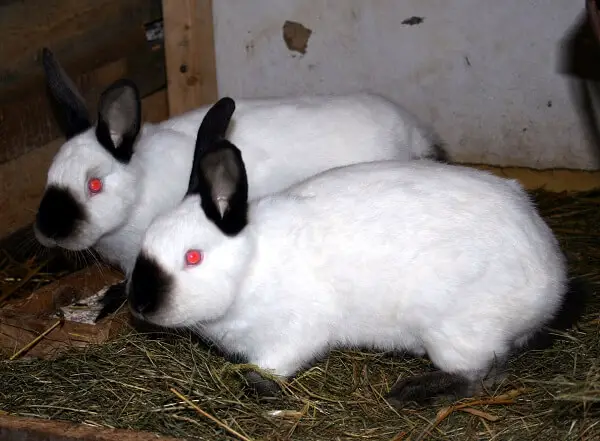
These meat rabbits are stocky and often grow to weigh about eight to twelve pounds. They are a cross-breed between Chinchilla rabbits New Zealand Whites.
2. New Zealand Whites
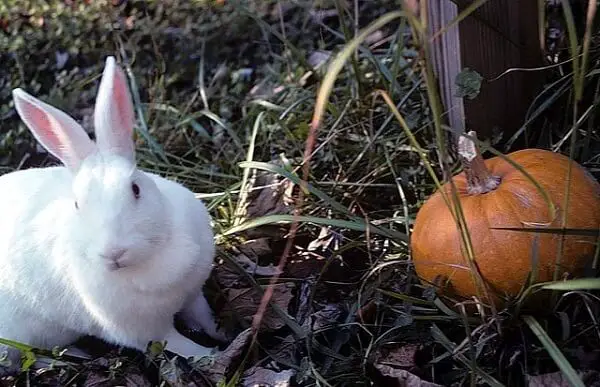
This breed of meat rabbits is perhaps both the most common and the most popular. They routinely weight between nine to twelve pounds. It is not uncommon for kits to reach eight pounds when they are only about eight weeks old.
3. American Chinchilla
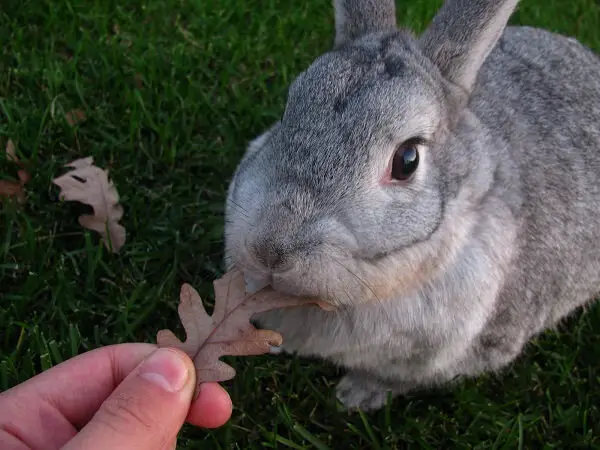
Chefs around the globe tend to favor cooking and smoking this meat rabbit breed. Mature Chinchilla meat rabbits weigh about nine pounds.
4. Satin Rabbits
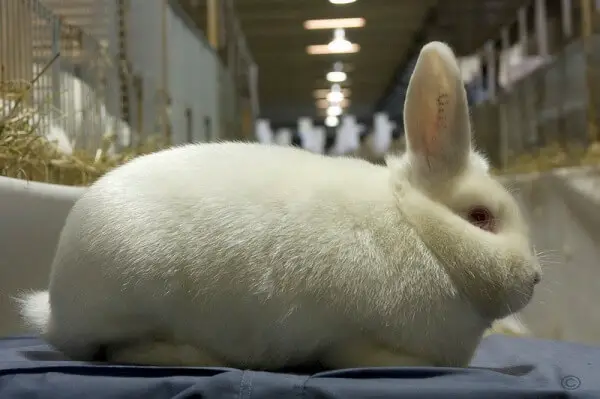
It would be difficult to find a more cold hardy meat rabbit than the Satins. They boast a thick fur that is also heralded for its beauty. These meat rabbits commonly weigh about telve pounds when fully mature.
5. Flemish Giants
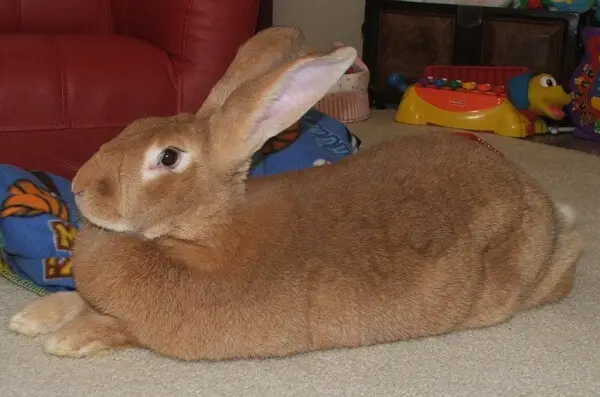
It may cost a little bit more to keep this meat rabbit breed due to the voracious appetite of the animals, but they do regularly weigh up to twenty pounds when butchered.
6. Blanc de Hotot
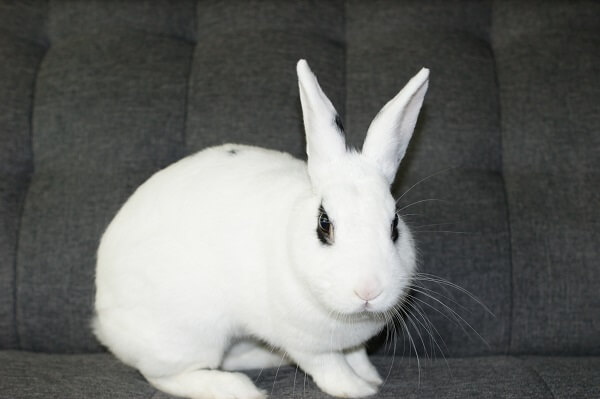
These are among the largest breeds of rabbits and are also a heritage breed. They were created in France during the 1900s and were only the second rabbit breed to ever stem from breeding cultivated by a woman. Typically, Blanc de Hotot meat rabbits weigh about eleven pounds. The does are highly regarded for their robust litters and maternal instincts.
7. Rex Rabbits
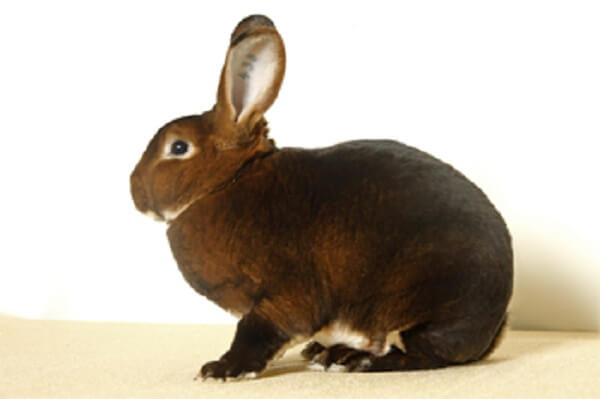
Mature meat rabbits of this breed generally weight around ten pounds. Rex rabbits also boast a beautiful and thick fur that has long been used in making outerwear and linings.
8. Palomino Rabbits
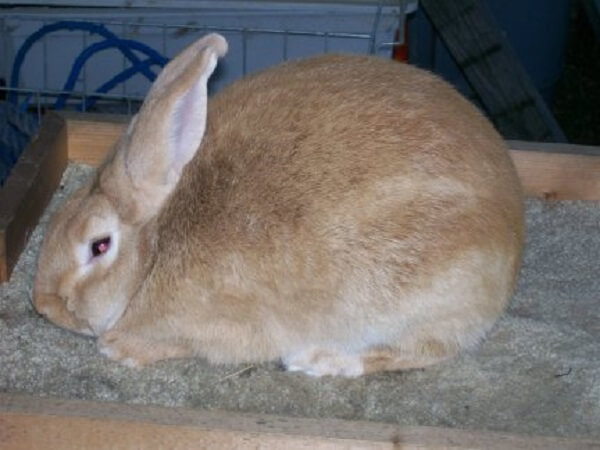
This meat rabbit breed has been popular in the marketplace for decades. They commonly grow to weigh between eight and eleven pounds.
9. Silver Foxes
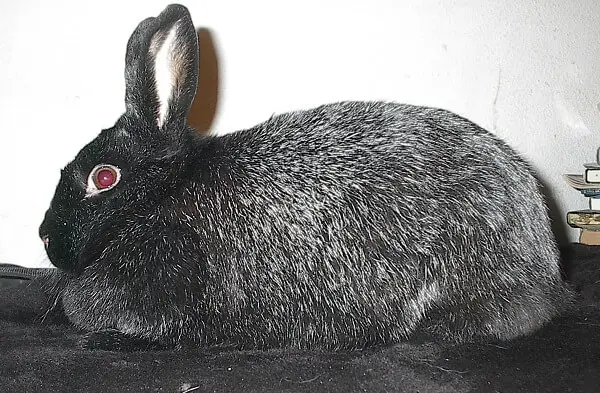
These rabbits have long been a favorite among homesteaders. They are not always easy to find, which means selling some of the offspring could help fund the feeding and caring of a rabbit colony or be used to purchase other needed preps. They commonly grow to weigh between ten and twelve pounds.
10. Champagne d'Argent
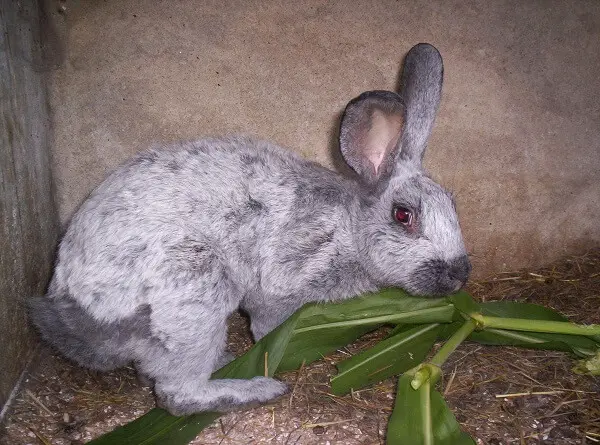
This moderately stout rabbit breed has been raised for meat production since the early 1600s. They typically weigh about nine pounds when mature enough for butchering.
11. Belgian Hare
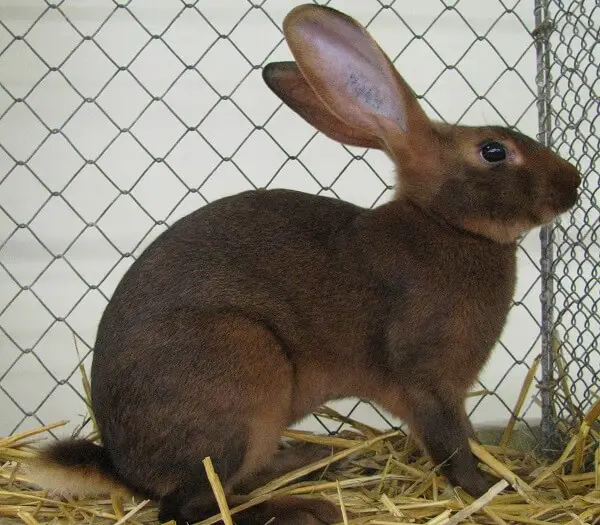
This heritage breed of meat rabbit is also a threatened breed due to the declining numbers currently being raised around the world. The Belgian Hare was instantly popular on the meat market when it was first introduced in America during the early 1900s.
A single rabbit of this breed could sell for up to $5,000 each during their heyday. In fact, millionaires like J.P. Morgan even invested heavily in the breeding of Belgian Hares to increase their private fortunes. Unfortunately for the folks hoping to get rich on the backs of rabbits, they found themselves with filled hutches in an over-saturated market after prices dropped dramatically.
The rabbits have fine bones and produce a lean meat. These rabbits have been known to be fairly difficult to breed. The breed is extremely active and needs plenty of room to deter poor behavior. Mature Belgian Hares tend to weigh between six and nine pounds.
12. Cinnamon Rabbits
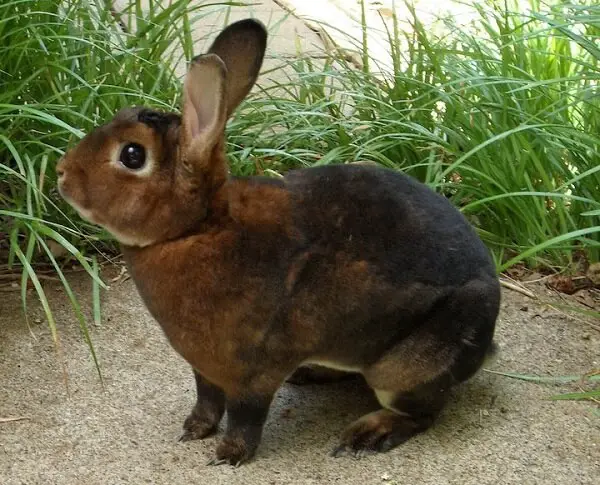
Rabbits of this meat breed typically weigh about ten pounds. The breed was created accidentally during the early 1970s after a little girl in Montana received a Chinchilla rabbit for Easter. It bred with New Zealand Whites she and her brother later acquired, and eventually, the kits were also bred with their father’s Checkered Giant and Californian rabbits. The breed is named after the beautiful color of their coats.
13. Florida White Rabbit
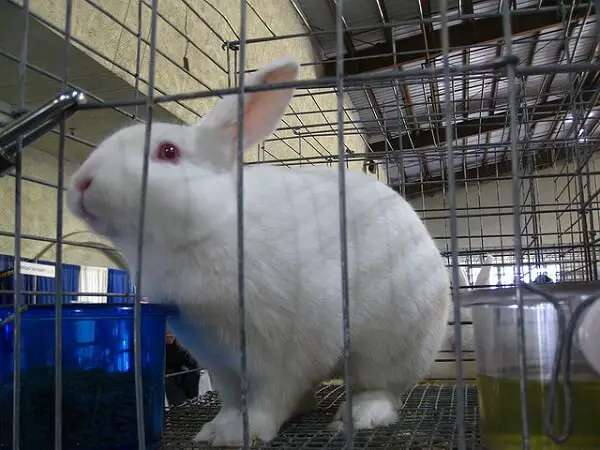
The Florida White Rabbit is an excellent all-purpose rabbit breed for smaller sized homesteads. Florida white rabbits are noted for their lighter bone structure and having less meat, but they also typically have a smaller demeanor and temperament than other rabbits as well, which makes them a good beginner breed to raise. These are a good rabbit to raise if you have limited space.
14. Himalayan Rabbit
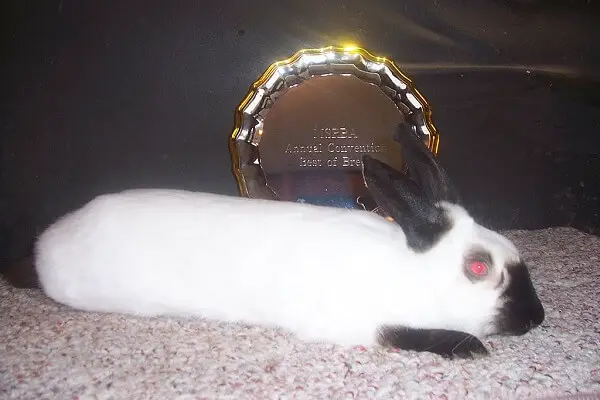
The Himalayan Rabbit is one of the oldest rabbit breeds in existence; their origins are largely a mystery, but it is known that they first arrived in the United States in the early 1900s. This breed is known for being very calm and peaceful and is therefore easy to take care of.
This is especially important for beginners and is one of the primary reasons why they have been so successful. Take note that they are sensitive to cold temperatures (which is odd considering the ‘Himalayan’ name), so during the winter, you may need to keep them in an indoor pen.
15. Dutch Rabbit
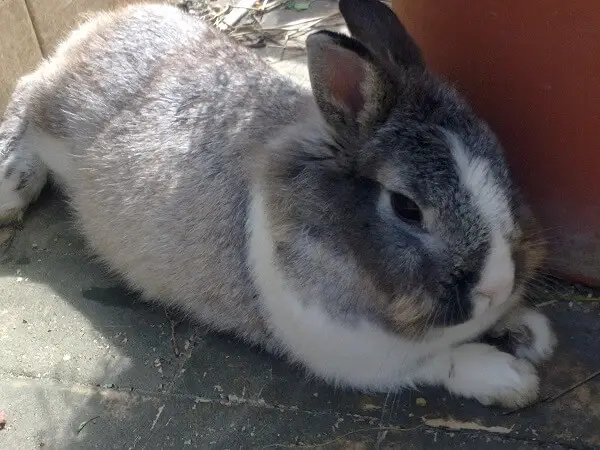
The Dutch rabbit is another very common species of rabbit. First bred in the 1830s in the United Kingdom (contrary to their name), it’s also very popular in the United States. The Dutch rabbit is very energetic and needs plenty of outdoor space in order to thrive, much like the Belgian hare rabbit that we just discussed.
Take note that dutch rabbits are small at usually around five pounds each, and will therefore have less meat on them. But they are widely available and usually cheap to buy.
Meat Rabbit Supplies
Once you choose the type or types of meat rabbits to raise, it is time to go shopping for all of the necessary husbandry supplies.
Here is a breakdown of the bare essentials in rabbit husbandry and their approximate cost:
Rabbit Hutch – You can make your own out of scrap wood and wire for next to nothing if you have such materials available. Always use a sturdy gauge of hardware cloth fencing and never chicken wire.
A hutch designed to house two rabbits should be approximately 3 feet wide, 30 inches deep, and 20 inches tall. The wire used on the floor, sides, and bottom of the hutch must keep out small predators like mink and raccoons who can get through chicken wire and be supportive enough not to sag beneath the weight of the rabbits.
The cost of a commercially manufactured small rabbit hutch is about $50, with larger cages costing as much as $200.
Feeder – A plastic or metal feeder large enough to feed at least one rabbit typically costs about $10 and are usually between nine and twelve inches tall.
Waterer – These husbandry supplies also cost $10 or more each. They are often made so they hang outside of the hutch with the bottle portion being made of plastic and the metal drip waterer that goes inside the cage made of metal to deter chewing by the rabbits.
Nesting Boxes – Each doe will need her own nesting box for protection against inclement weather and during breeding. They are commonly sold or constructed at home out of either wood or metal – the rabbits will eventually chew through and shred plastic nesting boxes. Nesting boxes usually sell for anywhere from $10 to $25 each.
Fans – Many rabbit keepers and breeders use solar fans that can be attached to the hutch to keep the rabbit cool during the summer. When temperatures get over 90 degrees, rabbits (especially pregnant or nursing does) can die of heat stroke. Solar fans also sell for about $20 to $35 each.
Lights – Placing some solar landscaping lights in the ground around the hutch and/or solar motion-detecting lights on the hutch, can help deter predators. Prices for lights varying depending upon dimension and type but can typically be purchased for less than $30 each. Dollar stores often stock single landscaping solar lights.
Heaters – Solar powered heaters to help keep the rabbits and their kits warm in the winter generally cost between $50 to $75 each.
Feed – A bag of rabbit feed generally ranges in price from $9 to $25 for a 50-pound sack. A squad bale of hay typically costs about four or five dollars.
Bedding – The rabbits will need bedding to sleep on and to make a place to keep their kits in the nesting boxes. A square bale of straw usually costs about $3.
Expect to pay between $25 to $60 per quality meat rabbit. Prices on some breeds can run up to $85 each.
Like this post? Don't Forget to Pin It On Pinterest!

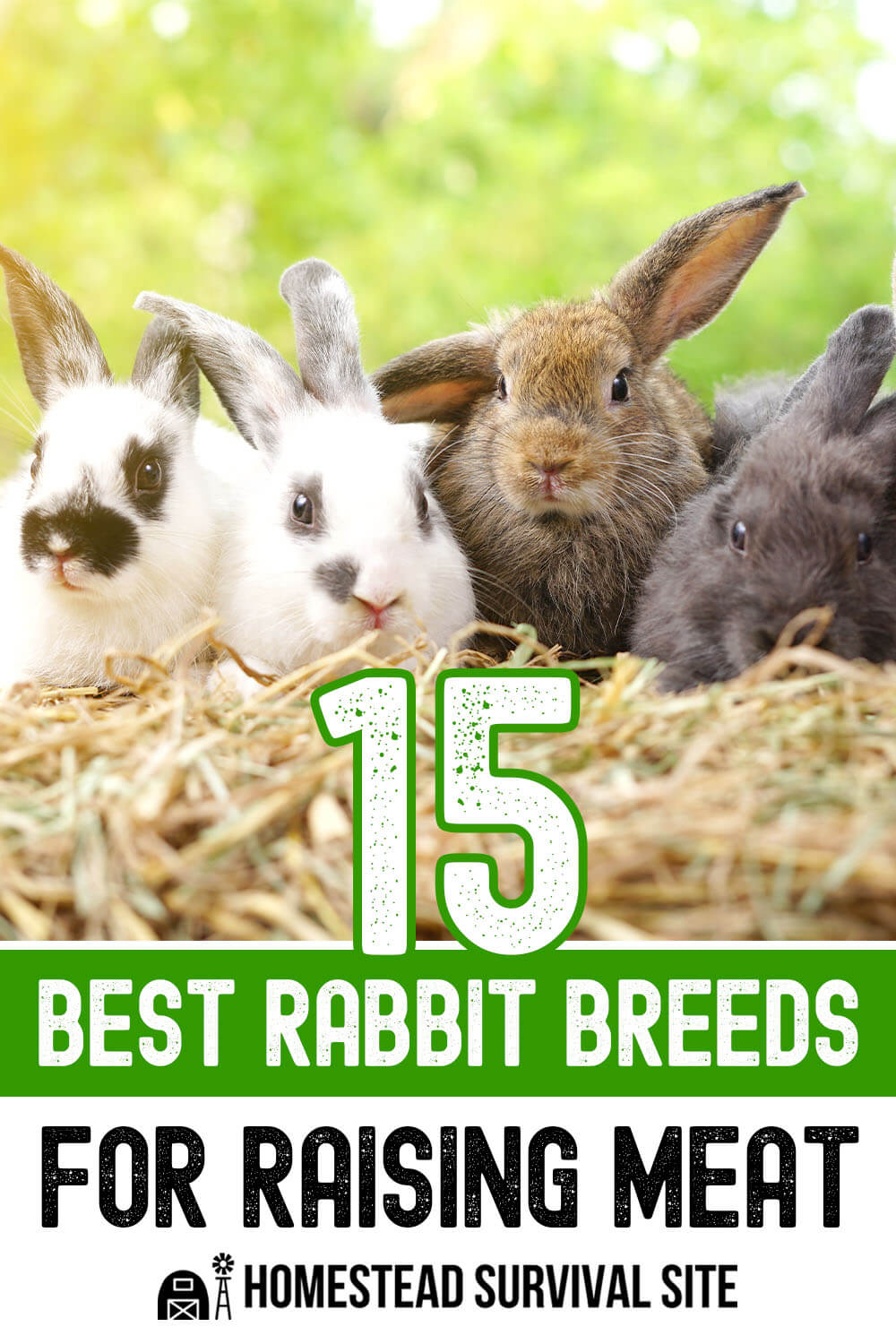






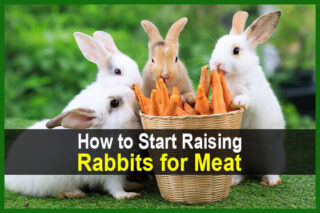

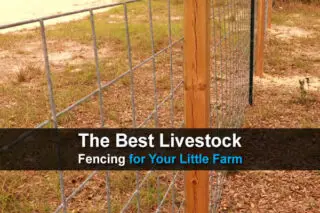


Some of this info needs to be researched more before people get rabbits and have to go through the headache trying to follow these instructions to a T. If you are raising rabbits for meat or meat and pelt you don’t put a buck in with the doe all the time. If you want to raise in colonies do it on the ground and they will dig burros to have their kits. There is a lot more to raising in cages then just putting them together and cleaning up after them. If they are in cages coons, opossums, coyotes, dogs etc will get under the cages and eat their toes and if a coon can get a hold of a leg they will darn near skin them alive, NOT something you want to walk into or have kids walk into either.
Surely one doesnt read 1 article then start a rabbit plantation.. it was an introduction.. take it as such..
Those are all very good points regardless!
Sadly, people do read just one article, if that. You know how many people ask what to feed their rabbit AFTER they get it home?
I am glad you listed the Flemish Giant. It is my Favorite breed. If I ever get a chance to buy one; it’ll be a Flemish giant
Anyone know which one is more disease resistant or resistant to extreme heat or cold?
There is another thing to look for when inspection of a rabbit and that is sore hocks this is very pain full to the rabbit and if the parents have it so will their kits.I haven’t found a cure for this it is sores on the hind feet.you should not use hardware cloth on the bottom of the cage as it has small pieces of wire sticking up that also causes sores on the feet.At one time I raised commercial rabbits and had 600 breeding does
I have had French Angoras, Satins, and Silver Foxes.
In my part of Middle Tennessee, the French Angoras we’re he least well-suited, their fur matt’s easily and requires a LOT more work, and they are far more sensitive to heat.
The Satins and Silver Foxes we’re resistant to haand cold, easier to care for overall, and I wouldn’t hesitate to have either breed again.
The Silver Foxes are my special favorites. Very sweet personalities.
Corrections:
*the fur matts easily
**resistant to heat and cold
Autocorrupt strikes again.
I’m very interested in meat rabbits.im also very new at this. Any suggestions would be appreciated. I’m thinking the Flemish giant or California white is what I’m looking for…
RE: Flemish Giant – You state “they do regularly weigh up to twenty pounds when butchered.” Is that before after butchering?
I believe it’s after butchering.
Greetings! Should you require web scraping services, I’d gladly help
you out. As a skilled professional in this domain, I possess the knowledge and essential tools to
provide fast and accurate data extraction. This can facilitate you in deciding wisely and growing your business.
Feel free to reach out for any of your data scraping
needs.. Rule-based Data Scraper
Generally speaking a well done article. I respectfully disagree with including the Flemish or any large rabbit breed as a good meat breed. If they were a good choice, commercial growers would use them. Additionally, large breeds spend the first part of their lives building bone structure, to carry their larger weight, which gives them a lower meat to bone ratio. If a person’s goal is meat, they’re a poor choice.